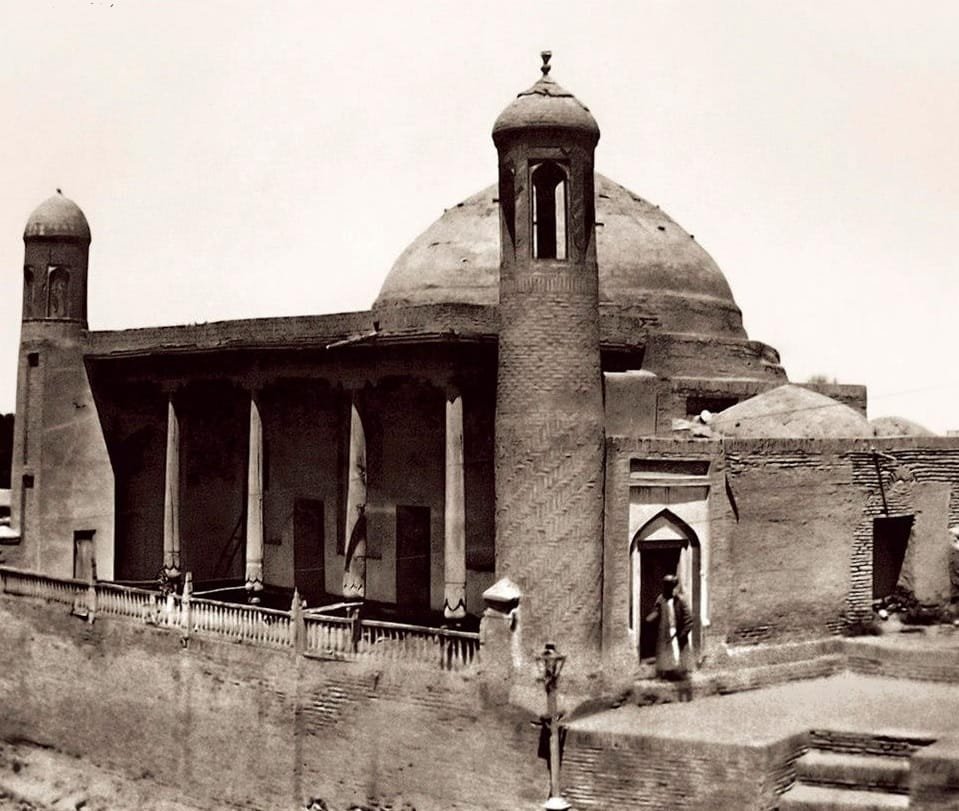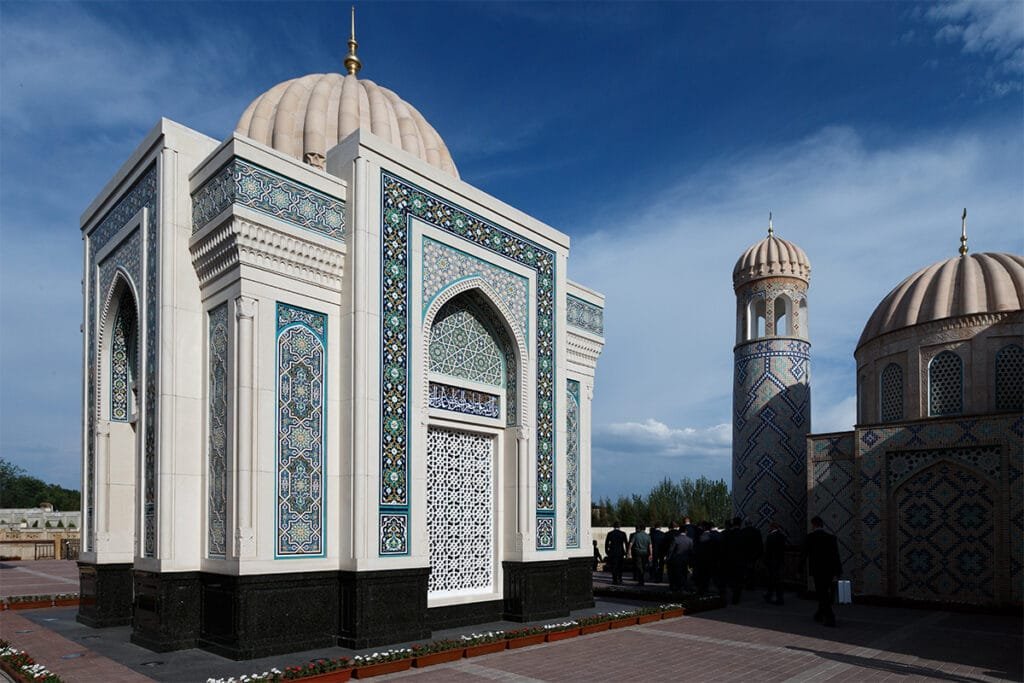Hazrat Khizr Mosque: A 19th-Century Historical Gem in Samarkand Restored in 1854

Hazrat Khizr Mosque: A Symbol of History and Spirituality in Samarkand
The Hazrat Khizr Mosque (Hazrati Xizr masjidi) is an iconic Islamic structure located at the southern edge of the ancient Afrasiyab settlement in Samarkand, Uzbekistan. Renowned for its historical and spiritual significance, the mosque is named after the revered prophet Khizr, a legendary figure in Islamic tradition associated with the “water of life” and protection of travelers. Positioned at the intersection of Shakhizinda and Tashkent streets, the mosque not only reflects the cultural heritage of Samarkand but also serves as a remarkable example of Central Asian Islamic architecture.
In 2018, the mosque gained further prominence with the inauguration of the mausoleum of Islam Karimov, the first President of Uzbekistan, constructed within its grounds. This addition has made the site both a historical landmark and a contemporary symbol of national pride.
Historical Overview
The Hazrat Khizr Mosque traces its roots back to the early 8th century, during the Arab conquest of Sogdiana. According to legend, after the Arab general Qutayba ibn Muslim captured Samarkand in 712 CE, his forces attempted to flood the city fortress by damming the Ju-i Arzis canal. A miraculous event occurred when a massive white bird descended from the heavens and destroyed the dam. To commemorate this divine intervention, the mosque was established on the site of a former Zoroastrian temple by Muhammad ibn Wasi, a companion of Qutayba.
The original mosque was destroyed in 1220 CE during the Mongol invasions led by Genghis Khan. The current structure was rebuilt on the ancient foundation in 1854. Throughout its history, the mosque underwent several renovations, with significant works carried out in 1884, 1899, and 1919, when the entrance portal, ribbed dome, and eastern minaret were added under the direction of the renowned local craftsman Abduqadir Baqiyev.
Architectural Features
The Hazrat Khizr Mosque is a stunning example of Samarkand’s folk architectural style, featuring a harmonious blend of traditional Islamic and local design elements. Its layout and decorative details make it an exceptional representation of the region’s architectural heritage.

Key Architectural Elements:
- Overall Structure:
- The mosque spans a rectangular area measuring 30 x 16 meters, with an asymmetrical layout that adds to its unique charm.
- Its key components include a winter prayer hall (khanaqah), a columned veranda (iwan), and additional structures such as a vestibule and an elegant minaret.
- Winter Prayer Hall (Khanaqah):
- The khanaqah is square in shape, crowned with a dome and featuring a mihrab on its western side, flanked by small chambers.
- Entrance Portal and Vestibule:
- The portal, adorned with a ribbed dome and flanked by gul-dasta towers, serves as a grand entryway.
- The wooden doors, dating back to the 19th century, showcase intricate carvings.
- Decorative Elements:
- The mosque’s interior and exterior are adorned with vibrant ceiling paintings, kirma panels, carved ganj ornaments, and glazed ceramic stalactites.
- Minaret and Balancing Tower:
- A freestanding eastern minaret and a western gul-dasta tower provide a balanced architectural composition.
The Mausoleum of Islam Karimov
In 2016, the Hazrat Khizr Mosque became the final resting place of Islam Karimov, the first President of Uzbekistan. Following his burial, plans for a mausoleum were developed, with meticulous attention to preserving the site’s historical integrity, as it is under UNESCO protection.

Construction of the Mausoleum:
- Nearly 2,000 craftsmen, including decorators from India, contributed to the construction. The project was completed in 2018 to coincide with the 80th anniversary of Karimov’s birth.
Architectural Highlights:
- Structure and Design:
- The mausoleum comprises a traditional iwan and a centralized domed structure standing 7.55 meters tall.
- Made from white marble, the building is richly decorated with relief maiolica and multicolored ceramic tiles. The base features dark green marble, while the walls are capped with stalactite bands of carved terracotta.
- Interior Features:
- The interior is adorned with white marble inlaid with semi-precious stones, while the arched ceilings are painted using the kundal technique with gold leaf.
- The lower sections of the walls are clad in light green onyx, and a central sagana crafted from white onyx bears Quranic verses and inscriptions from the Timurid era.
- Symbolism:
- An inscription near the entrance reads: “This sacred place is the eternal resting site of the First President of the Republic of Uzbekistan, the great statesman and political leader, the beloved son of the Uzbek people, Islam Abduganievich Karimov.”
Cultural and Religious Significance
The Hazrat Khizr Mosque is more than a place of worship; it is a cultural and spiritual landmark that embodies centuries of history:
- Religious Heritage: As a site associated with the prophet Khizr, the mosque remains a symbol of guidance and protection.
- National Identity: The addition of Karimov’s mausoleum has elevated the mosque’s status as a symbol of modern Uzbekistan’s legacy.
Visitor Experience
Nestled at the confluence of Shakhizinda Street and Tashkent Street, the Hazrat Khizr Mosque offers breathtaking views of Samarkand’s skyline. Visitors can admire its intricate details, experience its spiritual ambiance, and reflect on its storied past. With its harmonious blend of historical and contemporary elements, the mosque continues to attract pilgrims, tourists, and history enthusiasts from around the globe.




